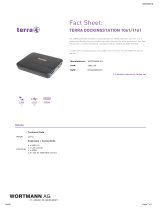
Page 5 of 6
Common Issues
IGMPv2 protocols not in use
SDVoE systems have been tested and proven using IGMPv2. Other
versions have not been proven.
IGMPv2 Multicast Snooping and
Querier protocols not enabled prior
to installation
SDVoE multicast traffic will flood ports and the system will not function
efficiently if multicast configurations are not in place before the
installation begins. The majority of network switches require multicast
Querier service is supplied from a
switch outside the SDVoE network
Querier service can become unreliable or disabled if it is served from
another switch. Disconnection of one cable and the service can be lost.
The network switches will be flooded with too much network traffic
without both the Querier and Snooping features.
Advanced Traffic Management
Configurations such as QoS, or
multicast and storm control are
operating or not disabled
Advanced Traffic Management features use network resources and
attempt to change network traffic behavior using techniques that can
disrupt and slow down time sensitive UDP/multicast SDVoE traffic.
Please Note: Advanced traffic management includes, but is not limited to: Cueing
management, buffer management, class and policy mapping, traffic policing, QoS, port data
rate management, flow control, multicast or broadcast storm control, and ACL-type packet
filtering functions. They can interfere with delivery of time-sensitive multicast video traffic.
The simplest IGMPv2 multicast management configurations provide the most reliable
DHCP server operating in SDVoE
network
DHCP service will work against efficient address management for the
SDVoE system.
Multicast addresses used by SDVoE
Ports and protocols used by SDVoE
TCP
6970
Used for communications between
control software and Server.
UDP
6969
Multicast, Unicast, Broadcast
Used between Control Server and
devices to discover devices, exchange
control information, and for
Point-to-Point advertisements. All
devices must be reachable by this
traffic (225.225.225.225).
UDP
10001 to 10004
Unicast, Broadcast and Multicast.
• Note: In general case, these ports can be
limited to a subset, depending on how RS-
232 is routed. For example, unicast only,
Used by Control Server and to
exchange RS-232 and Infrared control
data.
UDP 6137
Used for (USB) Device Configuration
Used for USB to Network Protocol







